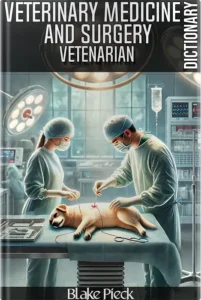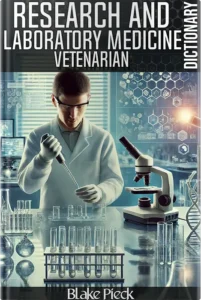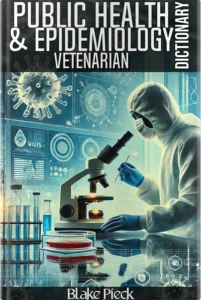The Essential “Clinical Anatomy – Human Anatomy Part 2 Dictionary”
Embark on a captivating journey through the intricacies of the human body with the meticulously crafted “Clinical Anatomy – Human Anatomy Part Two Dictionary.” This comprehensive resource delves into the application of anatomical knowledge in clinical settings, bridging the gap between theory and practice. It offers a thorough exploration of how anatomical structures intersect with medical conditions and clinical procedures, making it an invaluable tool for medical students, healthcare professionals, and anatomy enthusiasts.
The “Clinical Anatomy – Human Anatomy Part 2 Dictionary” is an essential resource for anyone interested in the study and application of human anatomy in clinical settings. Whether you’re a medical student, healthcare professional, anatomy enthusiast, or educator, this dictionary offers a comprehensive and detailed guide to clinical anatomy. By exploring the practical applications of anatomical knowledge, you can deepen your understanding, enhance your clinical reasoning, and contribute meaningfully to patient care. Invest in the “Clinical Anatomy Dictionary” and embark on an enlightening journey that blends anatomical science with clinical practice, empowering you to make informed clinical decisions and improve patient outcomes.
Why Invest in the “Clinical Anatomy Dictionary”?
1. Bridging Theory and Practice
One of the unique aspects of the “Clinical Anatomy Dictionary” is its focus on the practical application of anatomical knowledge in clinical settings. This dictionary doesn’t just provide definitions and descriptions; it explores the real-world implications of anatomical structures in medical practice. Understanding the correlation between anatomy and pathology is crucial for accurate diagnosis, effective treatment, and successful surgical interventions. This dictionary helps readers bridge the gap between academic study and practical application, enhancing their clinical reasoning and decision-making skills.
2. Comprehensive Exploration of Medical Conditions
The “Clinical Anatomy Dictionary” offers detailed anatomical illustrations and descriptions that highlight the anatomical basis of common medical conditions. From cardiovascular diseases and respiratory disorders to musculoskeletal injuries and neurological disorders, this dictionary covers a wide range of medical conditions. It explains how these conditions are linked to anatomical structures, providing a deeper understanding of their pathophysiology and implications for patient care.
3. Understanding Anatomical Variations
Anatomical variations can significantly impact patient care. This dictionary provides insights into the anatomical variations that healthcare professionals may encounter, helping them understand how these differences can affect diagnosis and treatment. By recognizing and understanding these variations, medical practitioners can tailor their approaches to individual patients, improving the quality of care they provide.
4. Diagnostic Imaging Techniques
Diagnostic imaging is a critical component of modern medicine. The “Clinical Anatomy Dictionary” covers various diagnostic imaging techniques, such as X-rays, CT scans, MRI, and ultrasound. It explains how these techniques are used to visualize anatomical structures and identify abnormalities. This knowledge is essential for interpreting imaging results accurately and making informed clinical decisions.
5. Anatomical Landmarks for Surgical Precision
Surgical procedures require precise knowledge of anatomical landmarks. This dictionary highlights these crucial landmarks, providing detailed descriptions and illustrations. Understanding these landmarks is essential for surgeons to navigate the human body accurately during procedures, minimizing risks and enhancing surgical outcomes.
Key Sections of the “Clinical Anatomy Dictionary”
1. Cardiovascular System
Explore the anatomy of the heart and blood vessels, understanding their role in health and disease. This section covers common cardiovascular conditions such as coronary artery disease, heart failure, and arrhythmias. It explains how anatomical knowledge informs the diagnosis and treatment of these conditions, from interpreting ECGs to performing bypass surgery.
2. Respiratory System
Delve into the anatomy of the respiratory tract, including the lungs, trachea, and bronchi. This section addresses respiratory disorders such as asthma, chronic obstructive pulmonary disease (COPD), and pneumonia. It provides insights into how anatomical structures are affected by these conditions and the implications for treatments like bronchoscopy and thoracentesis.
3. Musculoskeletal System
Understand the anatomy of bones, muscles, and joints, and their relevance to conditions such as fractures, arthritis, and sports injuries. This section highlights the anatomical basis for orthopedic procedures, including joint replacements, fracture fixation, and arthroscopy. It also covers physical therapy and rehabilitation techniques.
4. Neurological System
Explore the intricate anatomy of the brain, spinal cord, and peripheral nerves. This section covers neurological disorders such as stroke, multiple sclerosis, and spinal cord injuries. It explains how anatomical knowledge is crucial for neurological assessments, imaging, and interventions like neurosurgery and spinal decompression.
5. Digestive System
Learn about the anatomy of the gastrointestinal tract, including the stomach, intestines, liver, and pancreas. This section addresses conditions such as inflammatory bowel disease, liver cirrhosis, and gastrointestinal cancers. It provides insights into diagnostic techniques like endoscopy and surgical procedures such as colectomy and liver transplantation.
6. Diagnostic Imaging and Techniques
This section explains various diagnostic imaging techniques and their applications in clinical practice. It covers the principles of X-rays, CT scans, MRI, and ultrasound, detailing how these modalities are used to visualize anatomical structures and diagnose conditions. It also includes information on interventional radiology procedures.
Who Can Benefit from the “Clinical Anatomy Dictionary”?
1. Medical Students
Medical students will find this dictionary an invaluable resource for their studies. It provides clear and detailed explanations of anatomical structures and their clinical relevance, helping students understand the practical applications of their anatomical knowledge. This dictionary is a valuable tool for exam preparation, clinical rotations, and practical assessments.
2. Healthcare Professionals
For healthcare professionals, the “Clinical Anatomy Dictionary” is an essential reference for clinical practice. It offers insights into the anatomical basis of medical conditions and procedures, supporting accurate diagnosis, effective treatment, and successful surgical interventions. This dictionary helps professionals stay updated with the latest anatomical and clinical knowledge.
3. Anatomy Enthusiasts
Anatomy enthusiasts and those with a keen interest in the human body will appreciate the depth and detail provided in this dictionary. It offers a comprehensive exploration of anatomical structures and their clinical significance, making it an engaging and educational read for anyone passionate about anatomy and medicine.
4. Educators
Anatomy educators can use this dictionary as a teaching tool to provide clear and precise explanations of clinical anatomy concepts. It supports lesson planning, lectures, and student assessments, enhancing the overall teaching and learning experience.





















